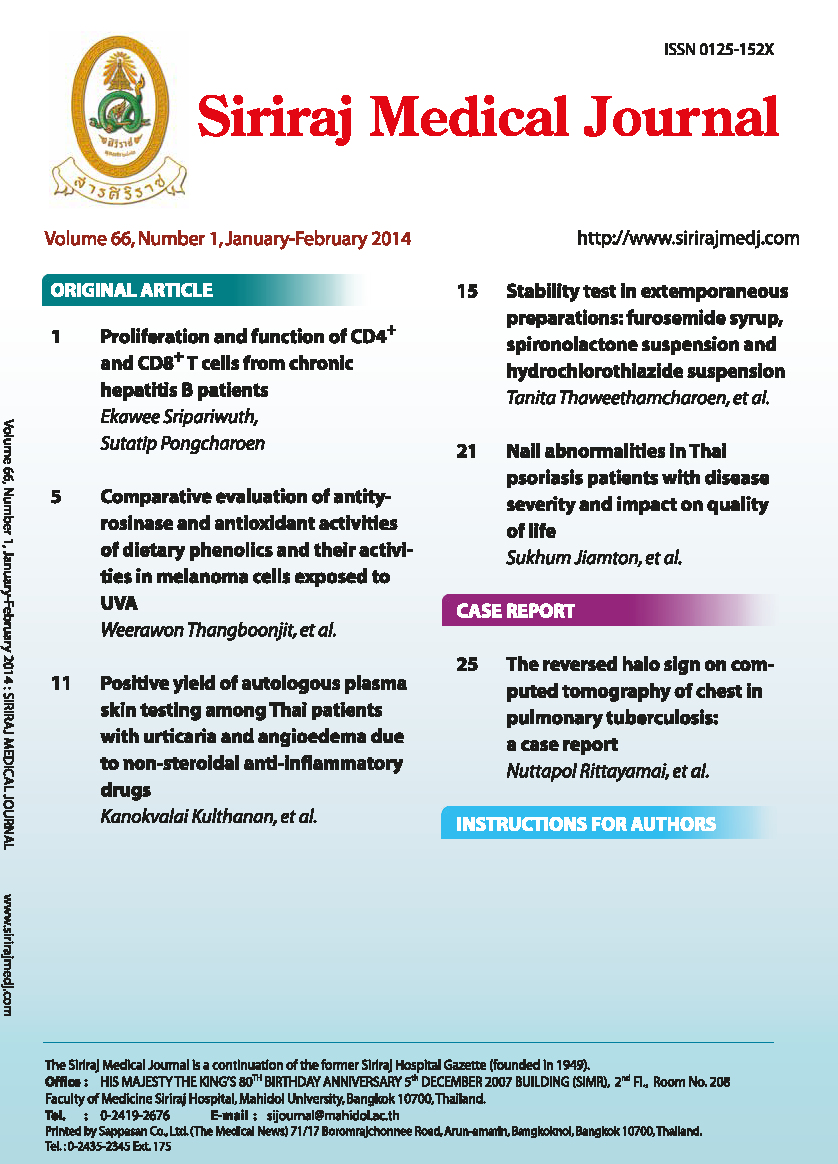Comparative Evaluation of Antityrosinase and Antioxidant Activities of Dietary Phenolics and their Activities in Melanoma Cells Exposed to UVA
Abstract
Background: Dietary phenolics have been shown to possess antityrosinase and antioxidant properties which account for their pharmacological effect against ultraviolet (UV)-mediated skin pigmentation. Hence, this study assessed the correlation between antityrosinase and antioxidant activities of various phenolic acids including caffeic acid (CA), ferulic acid (FA), gallic acid (GA), p-coumaric acid (PA) and quercetin using cell-free systems including mushroom tyrosinase and DPPH (1,1-diphenyl-2-picrylhydrazyl) assays and human melanoma (G361) cell culture model.
Methods: Antityrosinase and free radical (FR) scavenging activities of all test phenolics were determined using mushroom tyrosinase and DPPH assays, respectively. Inhibition of cellular melanogenesis with regard to regulation of intracellular oxidant formation and glutathione (GSH) content was assessed in UVA-irradiated G361 melanoma cells.
Results: The IC30 values for the mushroom tyrosinase inhibition activity showed a rank order of quercetin ≈ PA > kojic acid (KA) ≈ CA ≈ FA > GA. For the FR scavenging activity, IC30 values demonstrated a rank order of GA ≈ CA ≈ FA > quercetin > PA ≈ KA. In addition, both CA and FA were observed to suppress UVA-induced tyrosinase activity and melanin content in G361 cells, although CA exerted greater antimelanogenic effect than FA. Pretreatment with CA was also able to reduce oxidant generation and restore GSH content in irradiated cells.
Conclusion: Cell-free systems showed that antityrosinase activity of test phenolics was not associated with their FR scaven-ging activity. Moreover, we have herein reported the correlation between depigmenting effect and antioxidant action of CA in G361 cells.
Keywords: Phenolic acids, antioxidant, tyrosinase, melanogenesis, glutathione
Siriraj Med J 2014;66:5-10
Downloads
Published
How to Cite
Issue
Section
License
Authors who publish with this journal agree to the following conditions:
Copyright Transfer
In submitting a manuscript, the authors acknowledge that the work will become the copyrighted property of Siriraj Medical Journal upon publication.
License
Articles are licensed under a Creative Commons Attribution-NonCommercial-NoDerivatives 4.0 International License (CC BY-NC-ND 4.0). This license allows for the sharing of the work for non-commercial purposes with proper attribution to the authors and the journal. However, it does not permit modifications or the creation of derivative works.
Sharing and Access
Authors are encouraged to share their article on their personal or institutional websites and through other non-commercial platforms. Doing so can increase readership and citations.











